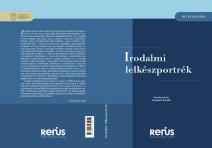Portraits of Clergymen in the Short Stories of Zsigmond Móricz: Interdisciplinary Character Analysis with LLM-based Language Technology
Synopsis
Can machine learning detect the hidden authorial attitudes embedded in literary character development? Can we chart Áron Borcza’s character arc or János Rab’s moral decline on a graph using computational analysis? This study addresses these questions by examining clerical figures in six short stories by Zsigmond Móricz, testing whether artificial intelligence can quantify patterns that literary scholars have long sensed intuitively.
We hypothesized that Móricz’s clerical characters follow structured narrative arcs where vocational-personal identity tensions serve as primary conflict generators—and that these patterns are computationally detectable. Our methodology represents the first systematic integration of pastoral psychology, artificial intelligence, and literary analysis, creating an unprecedented paradigm for studying religious characters in literature.
Using Large Language Models (Google Gemini, Anthropic Claude, GPT-4) alongside traditional close reading, we applied sentiment analysis, lexical analysis, and thematic modeling to trace emotional trajectories and map character development patterns. This approach allowed us to quantify previously intuitive observations about authorial tone and character psychology.
The computational analysis revealed three distinct clerical archetypes with measurable emotional trajectories. János Rab (Csipkés Komárominé [Mrs. Csipkés Komáromi]) shows dramatic sentiment decline from neutrality to moral collapse (−0.5 to −2.0), precisely mapping his vocational boundary violations. Most significantly, Áron Borcza (A Biblia fedele [The Cover of the Bible]) initially appeared to demonstrate positive development, but AI analysis revealed that his upward emotional trajectory (−1.5 to +1.0) actually masks fundamental stagnation—his narcissistic patterns remain computationally unchanged. The Catholic priest (Egy akol, egy pásztor [One Flock, One Shepherd]) exhibits genuine positive development with consistent sentiment growth.
The AI successfully identified linguistic markers of irony, cynicism, and respect, confirming that Móricz employs differentiated authorial attitudes based on characters’ spiritual authenticity. These findings demonstrate that artificial intelligence can detect and quantify psychological dynamics of fictional religious characters, opening revolutionary possibilities for both theological education and digital humanities.
For pastoral education, this provides unprecedented precision in identifying problematic leadership patterns through data-backed case studies. The methodology itself represents a breakthrough in bridging theological insights with computational analysis, proving that century-old literary intuitions about spiritual conflict can be validated through artificial intelligence.






